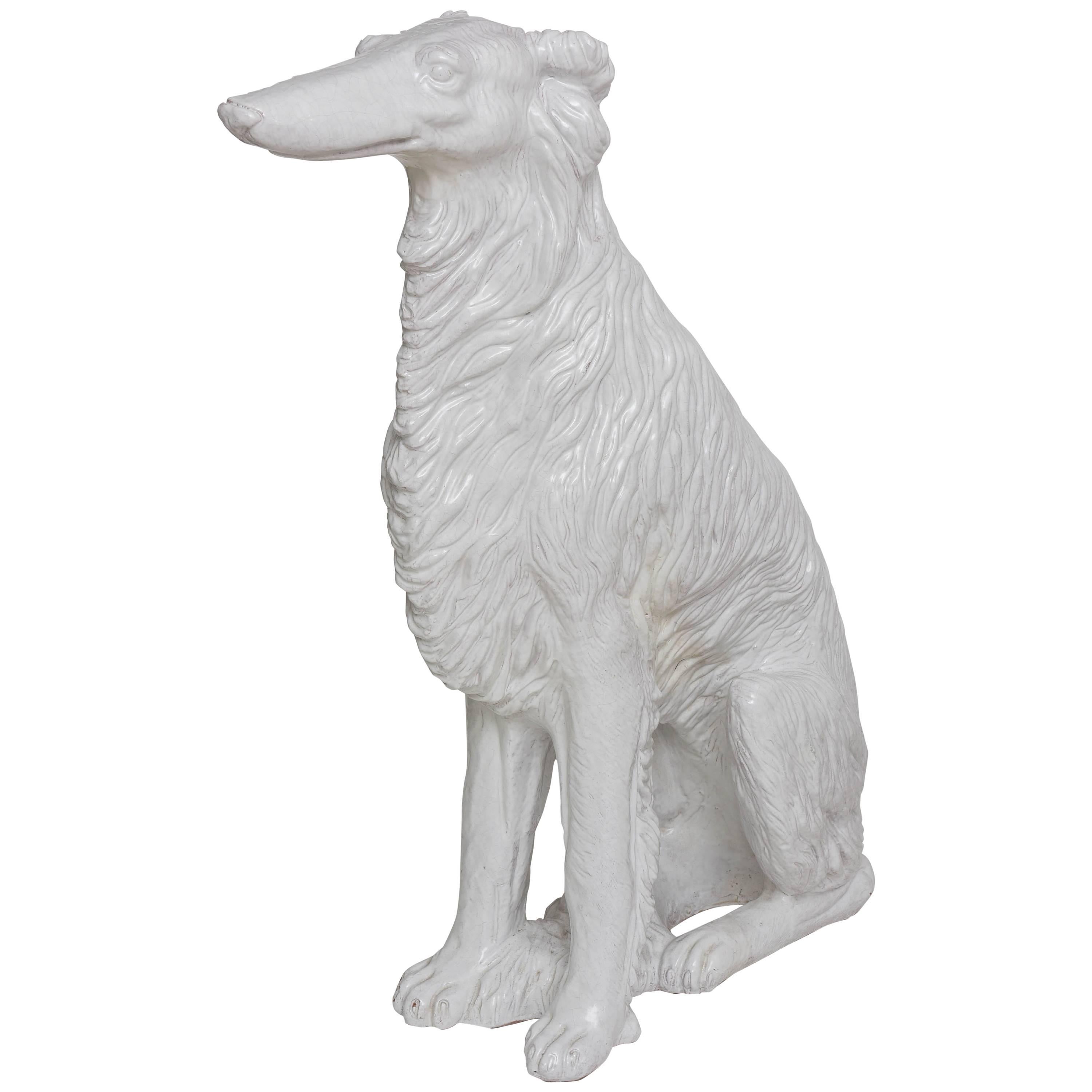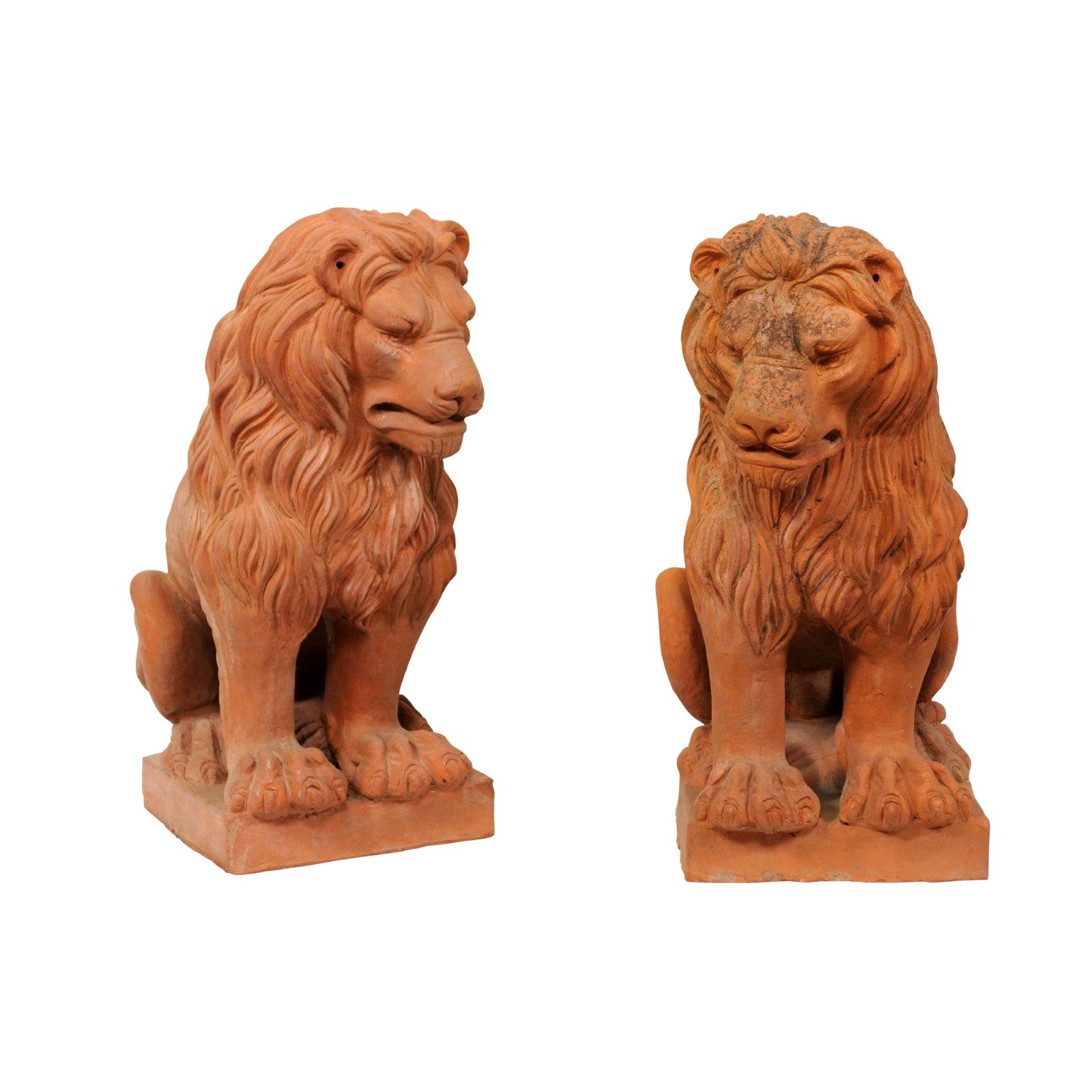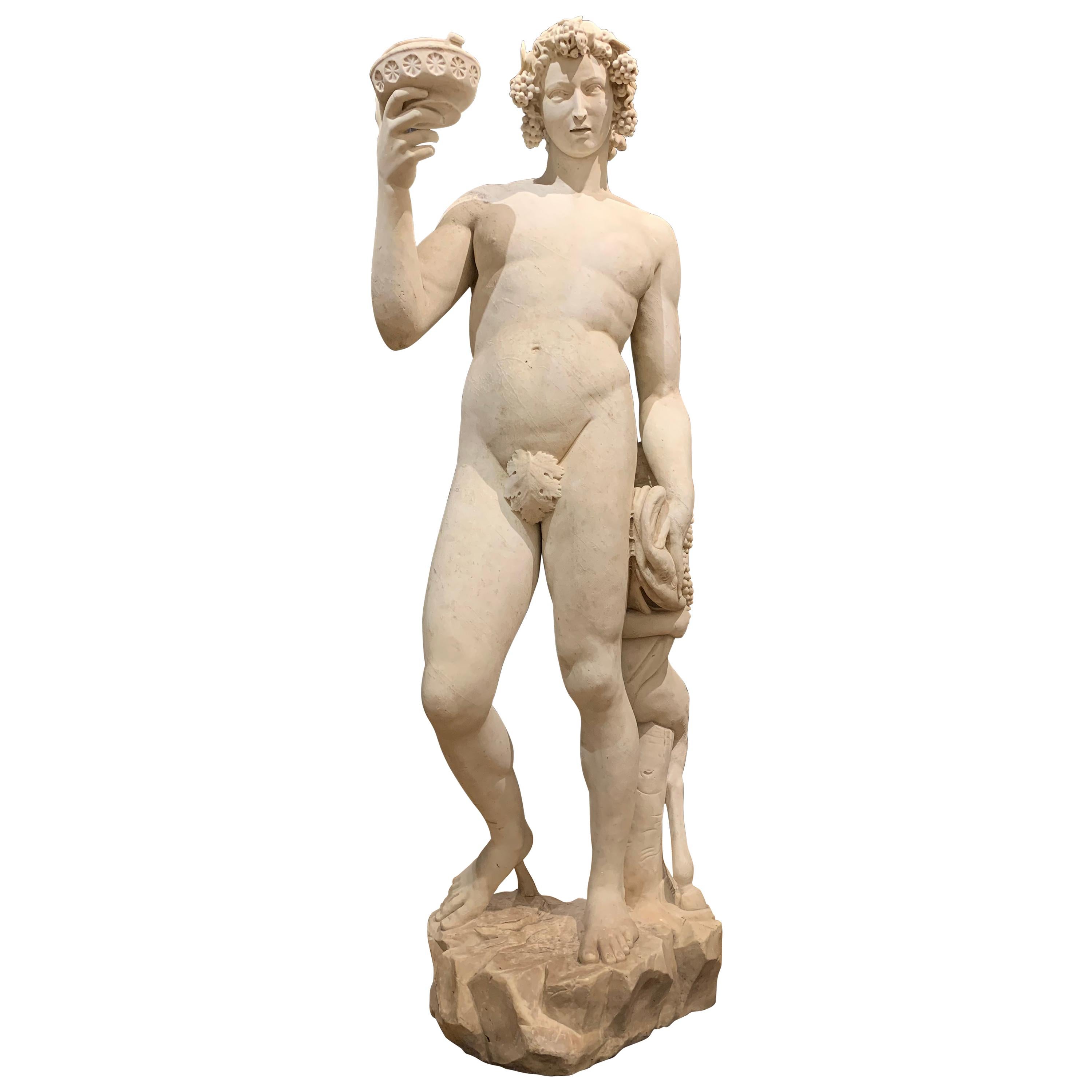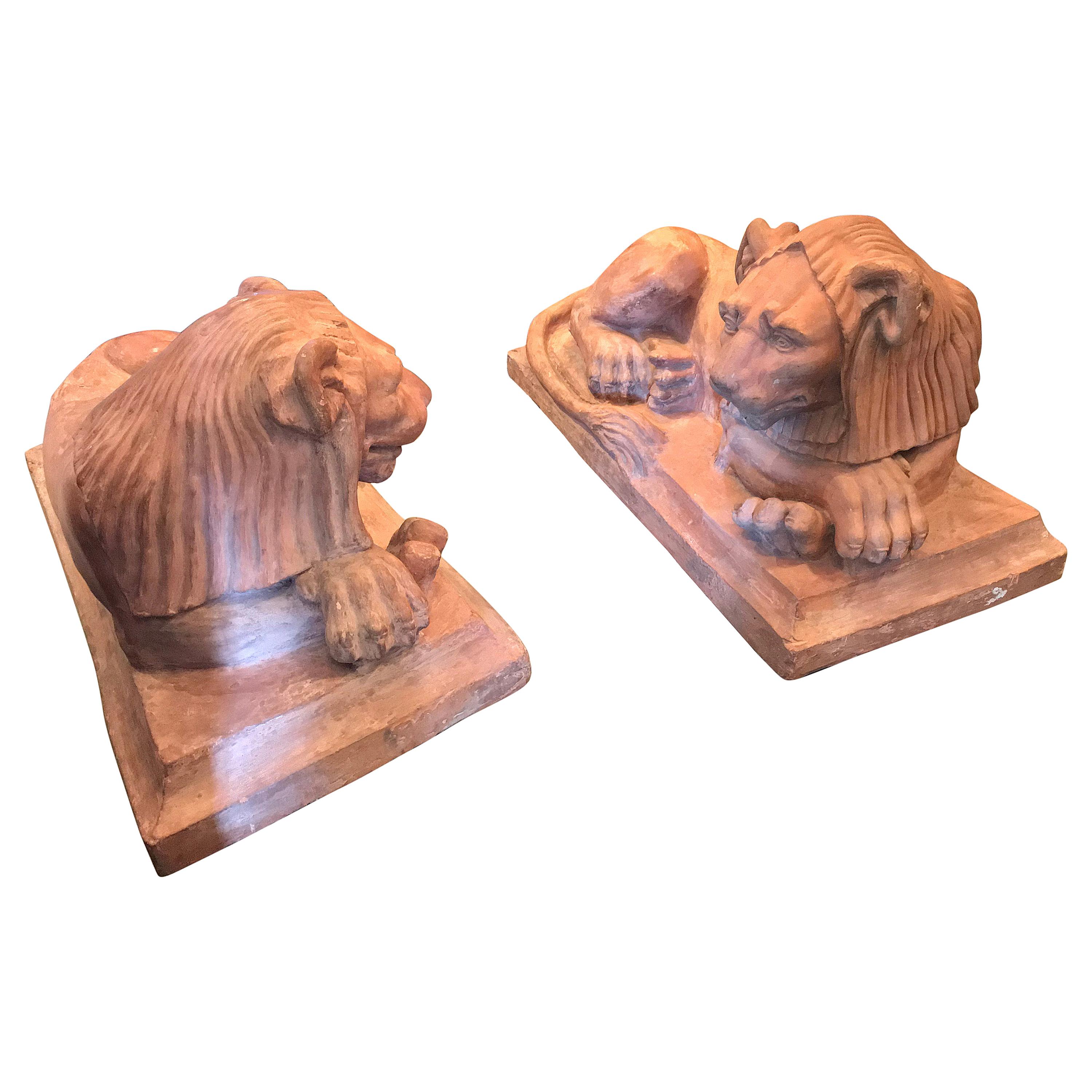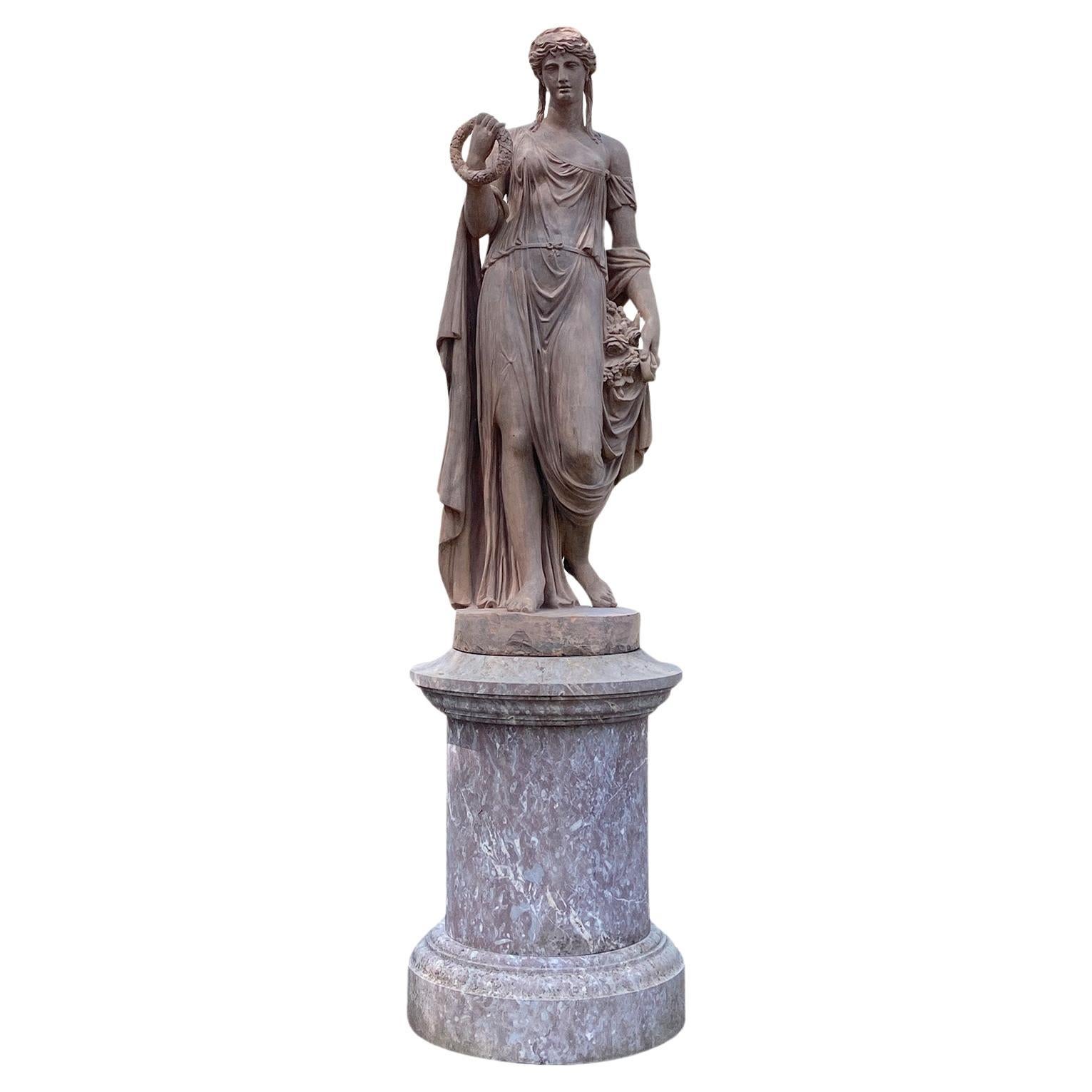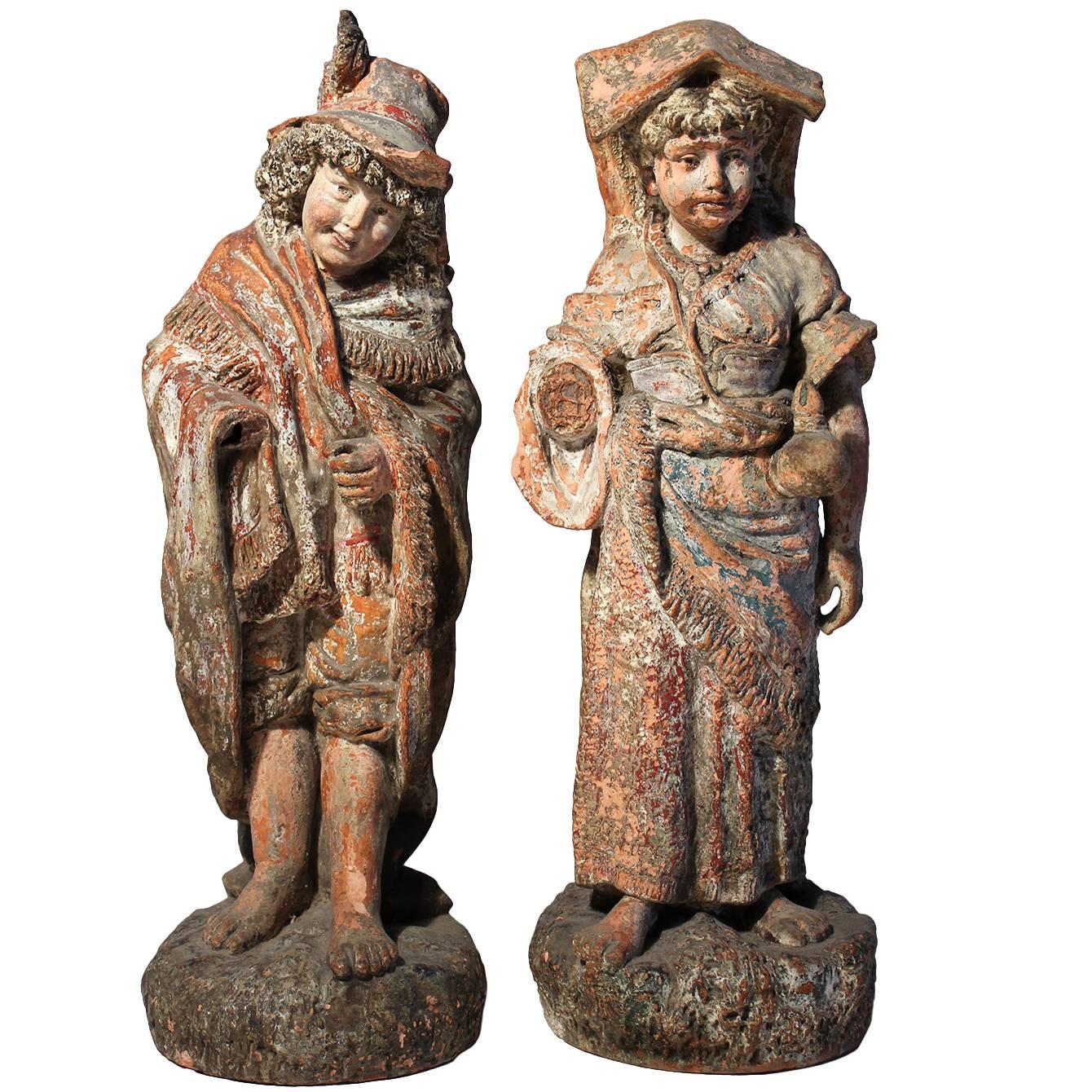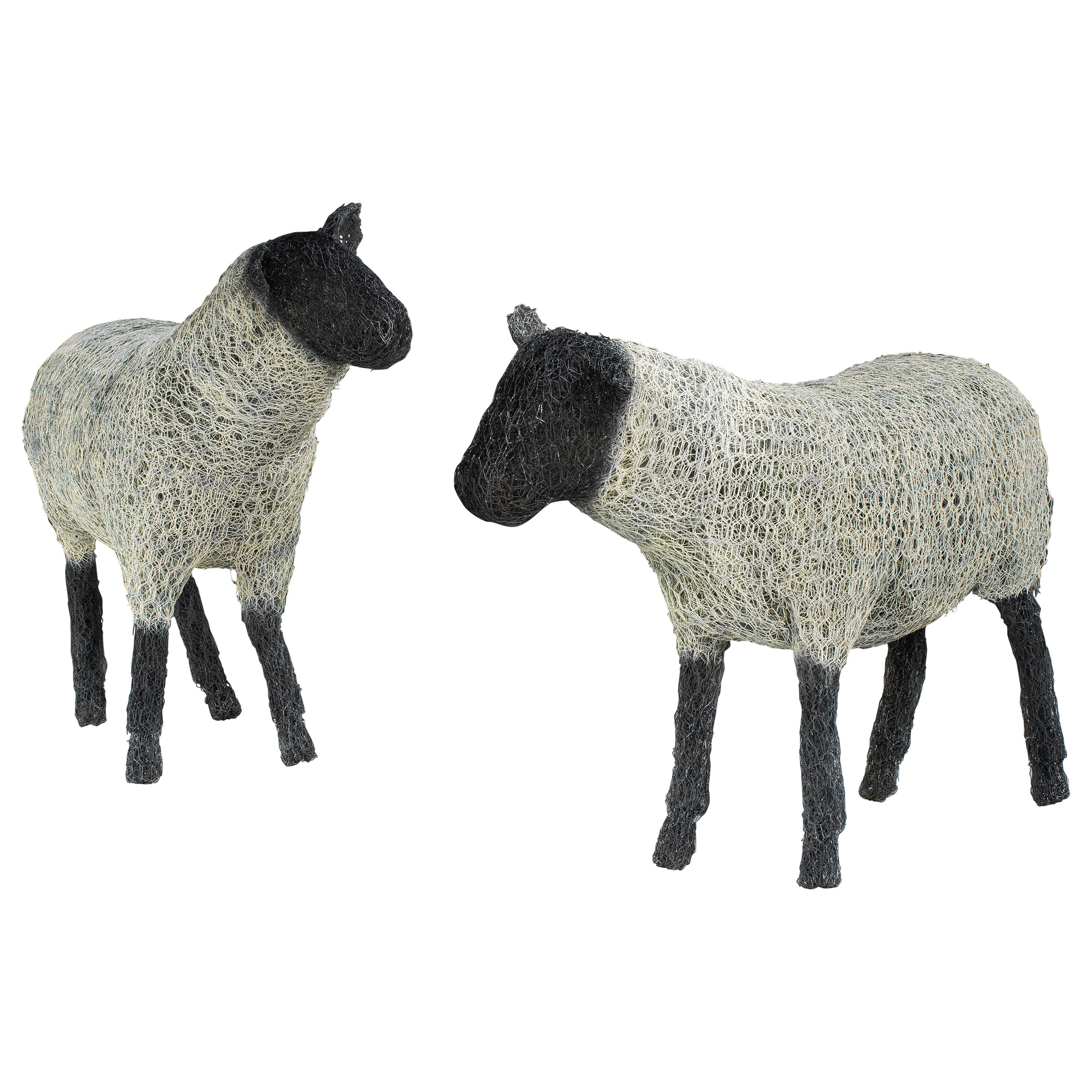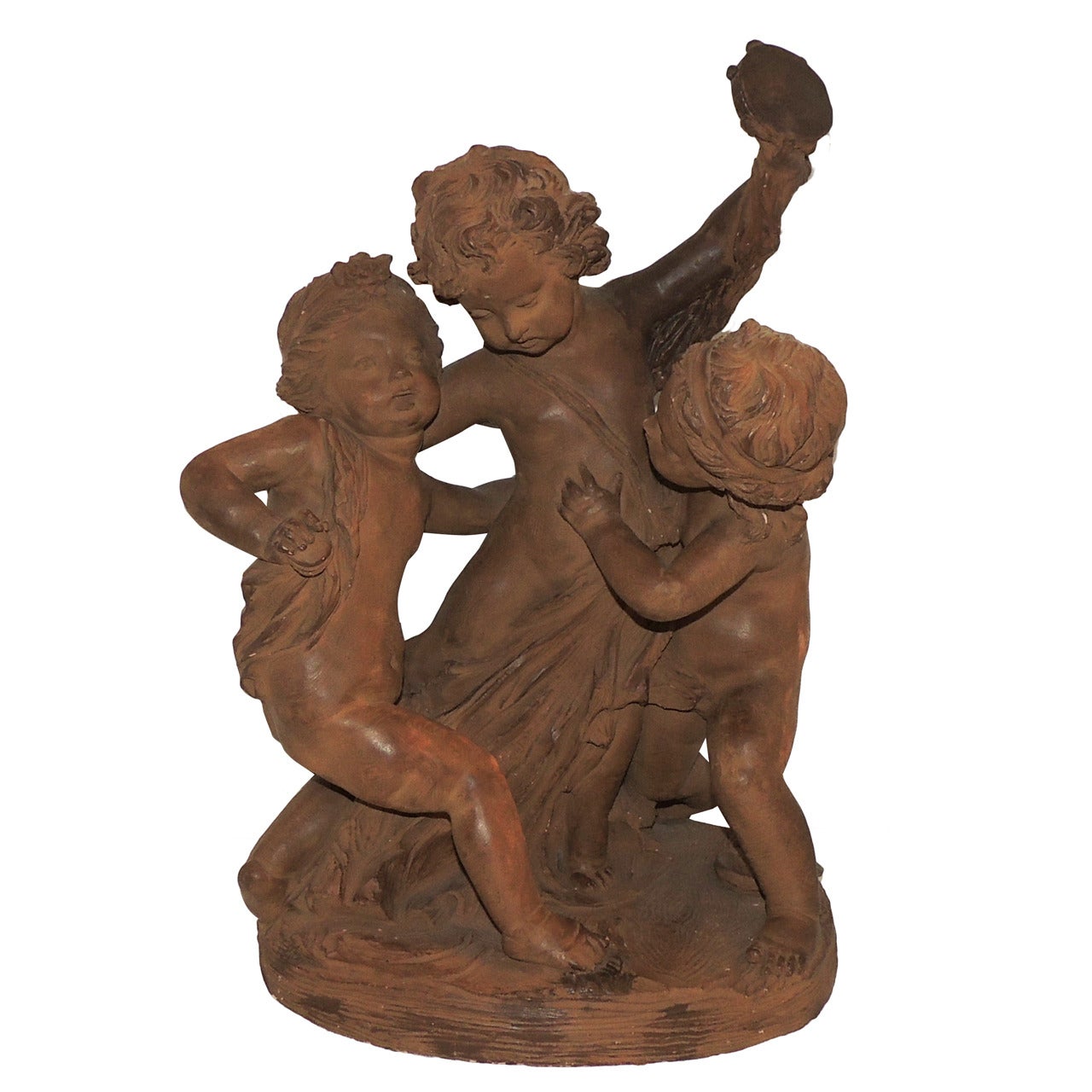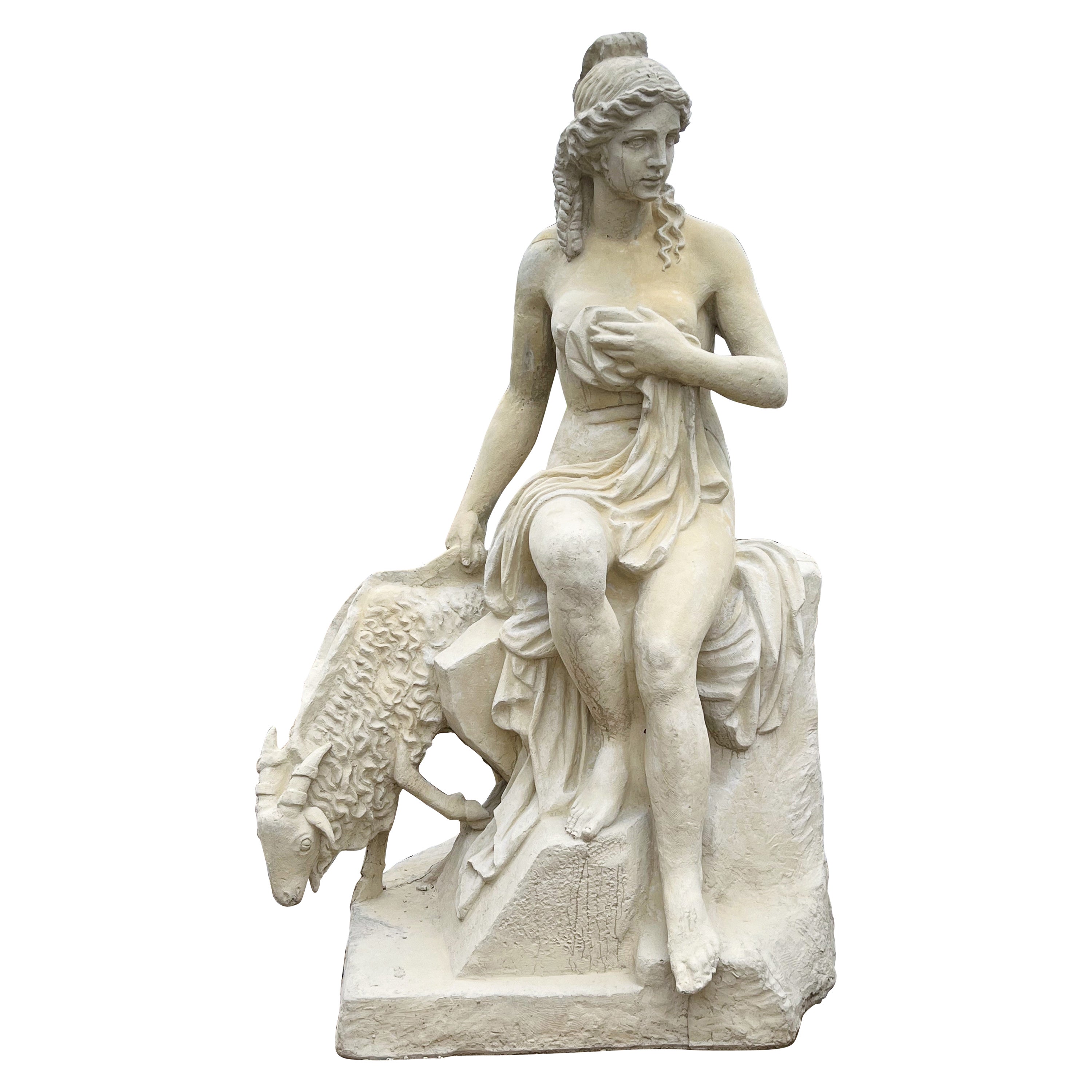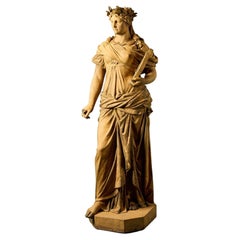
Magnificent and Rare Life-Size Italian Terracotta Statue of Flora
View Similar Items
1 of 10
Magnificent and Rare Life-Size Italian Terracotta Statue of Flora
About the Item
- Dimensions:Height: 64 in (162.56 cm)Diameter: 24 in (60.96 cm)
- Style:Neoclassical (Of the Period)
- Materials and Techniques:
- Place of Origin:
- Period:
- Date of Manufacture:circa 1780-1820
- Condition:Wear consistent with age and use. Minor losses.
- Seller Location:Woodbury, CT
- Reference Number:Seller: SFG 10211stDibs: LU8634883621
You May Also Like
- Life-Size Borzoi in Italian White Glazed TerracottaLocated in North Miami, FLLife-sized Russian wolfhound in white glazed terracotta. Made in Italy.Category
Vintage 1970s Italian Hollywood Regency Statues
MaterialsTerracotta
- Life-Size Terracotta Erato Statue, 1 of 9 from the Apollo Inn, LondonLocated in Wormelow, HerefordshireDating from 1898, this impressive life-size statue of Erato once decorated the façade of the Apollo Inn in Tottenham Court Road, London. Modelled by John Broad for Doulton and Co, this Erato statue stood alongside Apollo and the other 8 muses on the exterior of the Apollo Inn public house from 1898 until the building’s demolition in 1961. Located on the corner of Tottenham Court Road and Torrington Place, London’s Apollo Inn was designed by English architect Charles Fitzroy Doll (1850-1929). When the building was demolished in 1961 for an extension to the Heal’s furniture store – which remains on the site to this day – this statue of Erato along with Apollo and the other 8 Muses were removed. This life-size statue of Erato was sourced from a garden in Chiswick. Known as the Greek goddess of lyric poetry, she is seen as she is often depicted wearing a crown wreath and holding a lyre. Of the other 8 Greek Muses, the whereabouts of 4 is known. Euterpe is located in St George’s Gardens near Kings Cross railway station, presented to the borough by Ambrose Heal of Heal’s London. Clio was reputedly bought by architectural historian, Nikolaus Pevsner, who placed it in his garden in Hampstead. Thalia and Melpomene are both in the Powerhouse Museum in Sydney, Australia and appear alongside Apollo in John Davis’s book ‘Antique Garden Ornament...Category
Antique Late 19th Century English Neoclassical Statues
MaterialsTerracotta
- Pair of French Vintage Terracotta Snarling Lion StatuesLocated in Atlanta, GAA pair of French vintage terracotta lions. This pair of lions from France, standing approximately 2 feet in height, each feature abundantly fl...Category
20th Century French Statues
MaterialsTerracotta
- 19th Century over Life-Size Marble Statue of Bacchus after MichelangeloLocated in Essex, MAMid-19th century over life-size carved marble statue of Michelangelo's "Bacchus". Grand Tour copy through the "Point To Point" method directly from the original keeping its masterful proportions and Fine details in an exact size to Michelangelo's work. We have never seen a 19th century copy of this Renaissance Masterpiece of this size and are quite fortunate to be responsible for its stewardship until purchase by a discerning collector The original "Bacchus" is a marble sculpture by the master, Michelangelo, created circa 1496 when the artist was 21. This statue was originally commissioned by Cardinal Raffaele Riario. However, it was rejected by him and eventually found its way to Jacopo Galli, Cardinal Riario’s banker and a friend of the sculptor, who purchased it in 1506. Some 66 years later it was bought for the Medici and transferred to the royal house in Florence, Italy. Currently it can be viewed at the Museo Nazionale del Bargello in Florence. It is one of just two sculptures surviving Michelangelo’s initial period in Rome, with the other being Pieta. The artwork: This somewhat oversized...Category
Antique 19th Century Italian Renaissance Statues
MaterialsMarble
- Rare Pair French Retour D'egypt Terracotta Lions Sculptures Statues Los AngelesLocated in West Hollywood, CAExceptional fine and rare pair of French Retour D'egypt period terracotta lions, circa 1790-1810. The French Egyptian Revival style or the retour d'Egypte refers to style that makes use of the motifs and imagery of ancient Egypt. By the end of the 18th century enthusiasm for ancient Egypt generated by Napoleon's unsuccessful conquest of Egypt and, in Britain, to Admiral Nelson's defeat of Napoleon at the Battle of the Nile in 1798. Napoleon took a scientific expedition with him to Egypt and this was the first time a major study of ancient Egypt was done. Publication of the expedition's work, the description de l'Égypte, began in 1809 and came out in a series though 1826 influencing a new way of life in France thru architecture and decorative arts. However, works of art, decorative arts, furniture and, in the field of architecture and garden follies, funerary monuments in the Egyptian style had appeared in scattered European settings from the time of the Renaissance. The Egyptian Revival style came out in a few waves in France before Napoleon during the ancient Régime Egyptian motifs were mixed with the neoclassical-Louis XVI style in architecture, furniture and decorative arts. A big surge hit France around 1798 during Napoleons Egyptian expedition. This was the first major Egyptian Revival period as this was the first time in history that a major study on Egypt was done. French people became fascinated with the ancient Egyptian history, culture, architecture and furniture. Egyptian ornamentation like scarab beetles, sphinxes, winged lions and lotuses details were incorporated into Classical style furniture and decorative arts creating a style known as a hybrid neo-Egyptian. The next wave was during the height of the French Romantic period 1820s-1850s. The Egyptian Revival emerged as a result of the famous archaeological digs of the first half of the 19th century and was primarily used for Tomb memorials, temples, and cemeteries and some decorative arts. This style is distinguished by its adaptation of Egyptian forms and motifs, sphinxes guarding buildings including lotus blossoms, Pharaoh's heads, the winged disk symbol of the sun God, as well as the use of bold bright colors. At the end of the 19th century 1870s-1890s the Egyptian Revival styles were in vogue once more. At the Height of the Victorian period the Egyptian style was even more elaborate than before. Often incorporated with Neo-Greek & Renaissance Revival styles. Victorians were even more fascinated with these rare finds and incorporated their motifs into jewelry, furniture, glass and Art pottery. Heavily ornamented overstuffed furniture...Category
Antique Late 18th Century French Statues
MaterialsTerracotta
- A Terracotta Statue representing the Goddess Flora on PedestalLocated in Katonah, NYA fine and rare terra-cotta figure of Flora in contrapposto pose, classically robed with hair swept up and in curls, with a floral wreath in the figure’s proper right hand, and a nos...Category
Antique 1870s Italian Neoclassical Statues
MaterialsTerracotta
Recently Viewed
View AllMore Ways To Browse
Magnificent In Italian
Italian Terracotta
Size 1820
Italian Life Size
Antique Flora
Garden Dress
Rare Italian Hand Painted
Antique Statues Painted
Red Statues
Statue Neoclassic
Italian Painted Terracotta
Sculpted Statue
Life Sized Statue
Life Size Statues
Neoclassical Terracotta
1820 Dress
Sculpted Terracotta
Neoclassical Round Art
